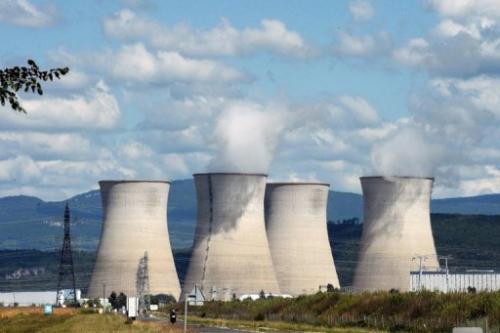by Maxine Segarnick
As the world’s population continues to expand over the next century, so will the need for energy production. The energy sources used predominantly around the world include coal, oil, and natural gas, all of which emit large amounts of greenhouse gases (GHGs) and other air pollutants when processed and burned for energy. Pandora’s Promise, a new film by Director Robert Stone, argues that nuclear energy, as a non-GHG emitting energy source, will play a crucial role in combatting the looming climate change catastrophe, in addition to wind, solar, and other forms of alternative energy.

Bard CEP had the privilege of screening the yet to be released film, Pandora’s Promise, and hosting a roundtable with the filmmaker himself. The film, recently highlighted in Rolling Stone and officially acquired by CNN Films to air in November, is a feature length documentary on the history of nuclear energy development. It is a history fraught with fear, anxiety, and conflict over the safety of nuclear energy plants and the radioactive waste they generate. By examining the history of nuclear development and highlighting its lower-than-expected environmental ramifications, Pandora’s Promise challenges the environmental movement to reconsider nuclear as a viable alternative to fossil fuels today. In fact, the film posits that developing nuclear energy is essential for attaining climate goals.

Image: The Spectator
The film strives to debunk several nuclear myths, such as the reportedly high radiation level and death toll caused by the explosion at the Chernobyl Nuclear Power Plant. Environmental activists continue to use Chernobyl as an example of the potential danger of nuclear development. However, the film shows a radioactivity monitor at Chernobyl, as well as at other sites in America and Europe, and demonstrates that the level of radioactivity in Chernobyl in 2012 is nearly identical to that of Central Park in New York City. In addition, the film highlights the protests carried out by environmental activists who proclaim that several million people died as a result of the Chernobyl disaster.

According to the International Atomic Energy Agency, this estimate is several thousand orders of magnitude greater than the deaths that actually occurred. The IAEA estimates that about 50 emergency workers died of acute radiation syndrome and an additional 3,940 deaths occurred as a result to radiation-induced cancer. The film leaves the decision up to the viewers—did millions of people die at Chernobyl, making this one of the largest cover-ups in history, or was the actual impact blown out of proportion, driven by the fear of a nuclear accident occurring closer to home?
Finally, the film discusses recent technological innovation in nuclear energy, highlighting the successful adoption of nuclear energy in France, which currently produces over 75% of its energy needs from nuclear plants. Leaps and bounds ahead of the rest of the world, France is the biggest net exporter of electricity in the world, and France continues to demonstrate the potential for nuclear energy development in other parts of the world.

During the roundtable discussion after the film, Bard CEP students questioned the logistics of nuclear energy development in the U.S. and abroad. Students asked whether nuclear was a viable energy source for developing countries with unstable governments and economies, to which Stone answered, undoubtedly not. The issues of the impact of uranium mining and waste management over the long term were also discussed. Stone explained that all of the waste from global nuclear production could fit into a single football field, and that future nuclear technology will reduce the volume of waste dramatically.
By screening Pandora’s Promise at Bard College, the school took an important step in overcoming existing anxieties related to the energy source’s historically turbulent past and instead focussed on the disastrous climate change impacts we must deal with in the present. Although nuclear is not the be-all-end-all of mitigating climate change impacts, the film presents meticulously researched information that begs the question: Is the most viable fossil fuel alternative the one that we fear most?
Pandora’s Promise is currently screening at selected universities and colleges across the United States. For screening locations, visit the website.

Maxine Segarnick is a combined B.A. and M.S. candidate at the Bard Center for Environmental Policy. After completing her degree, she will be attending law school.
